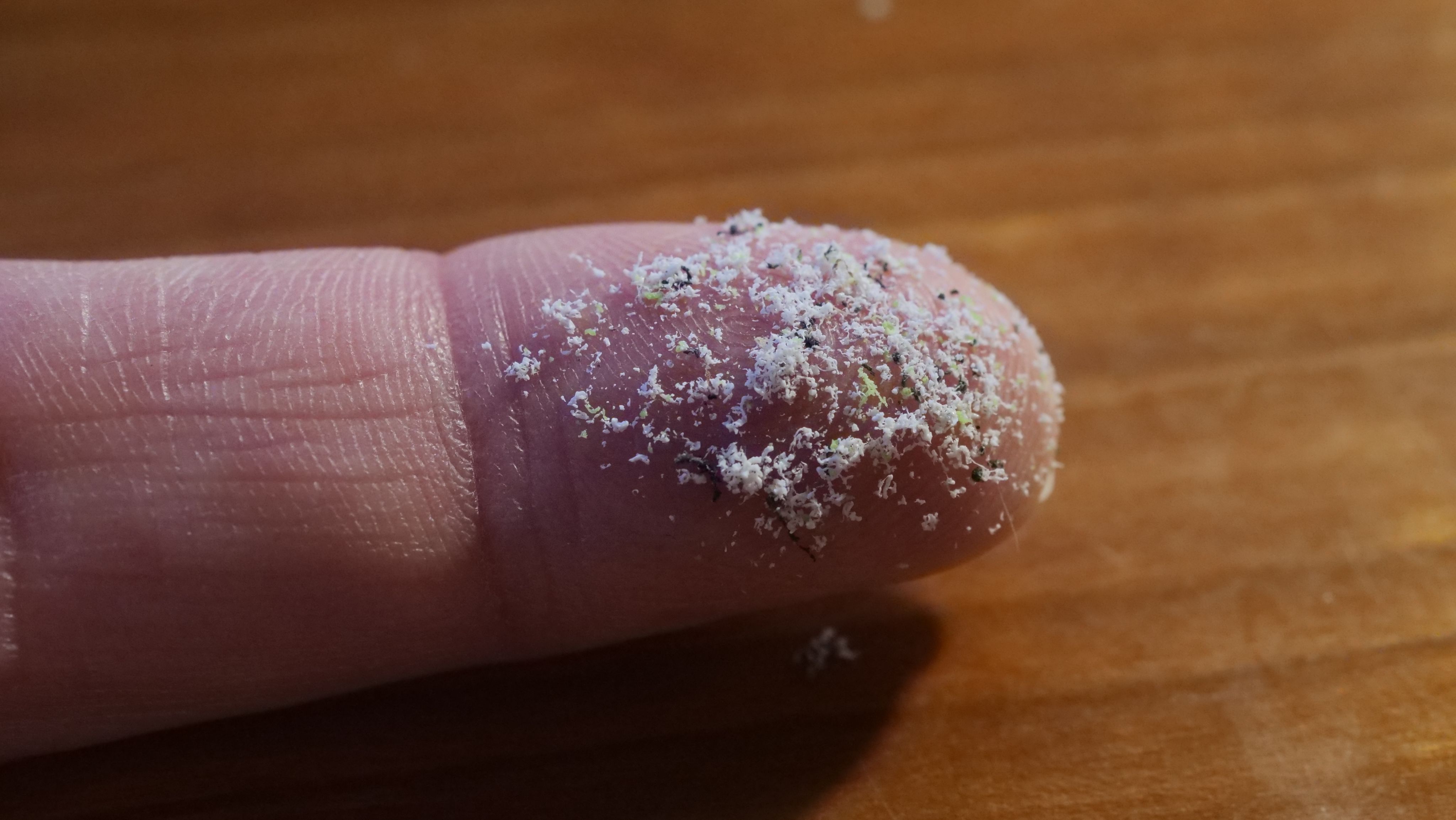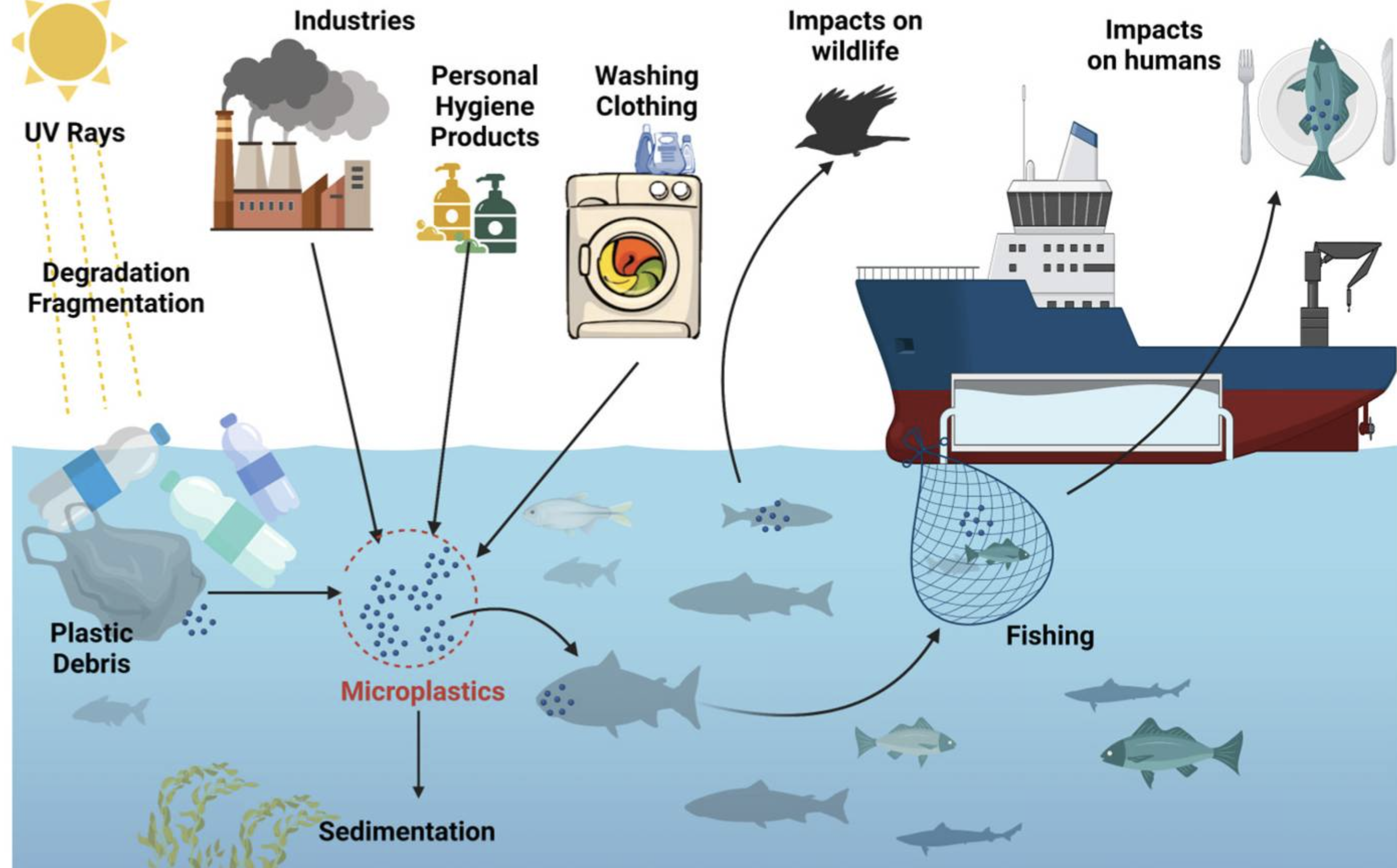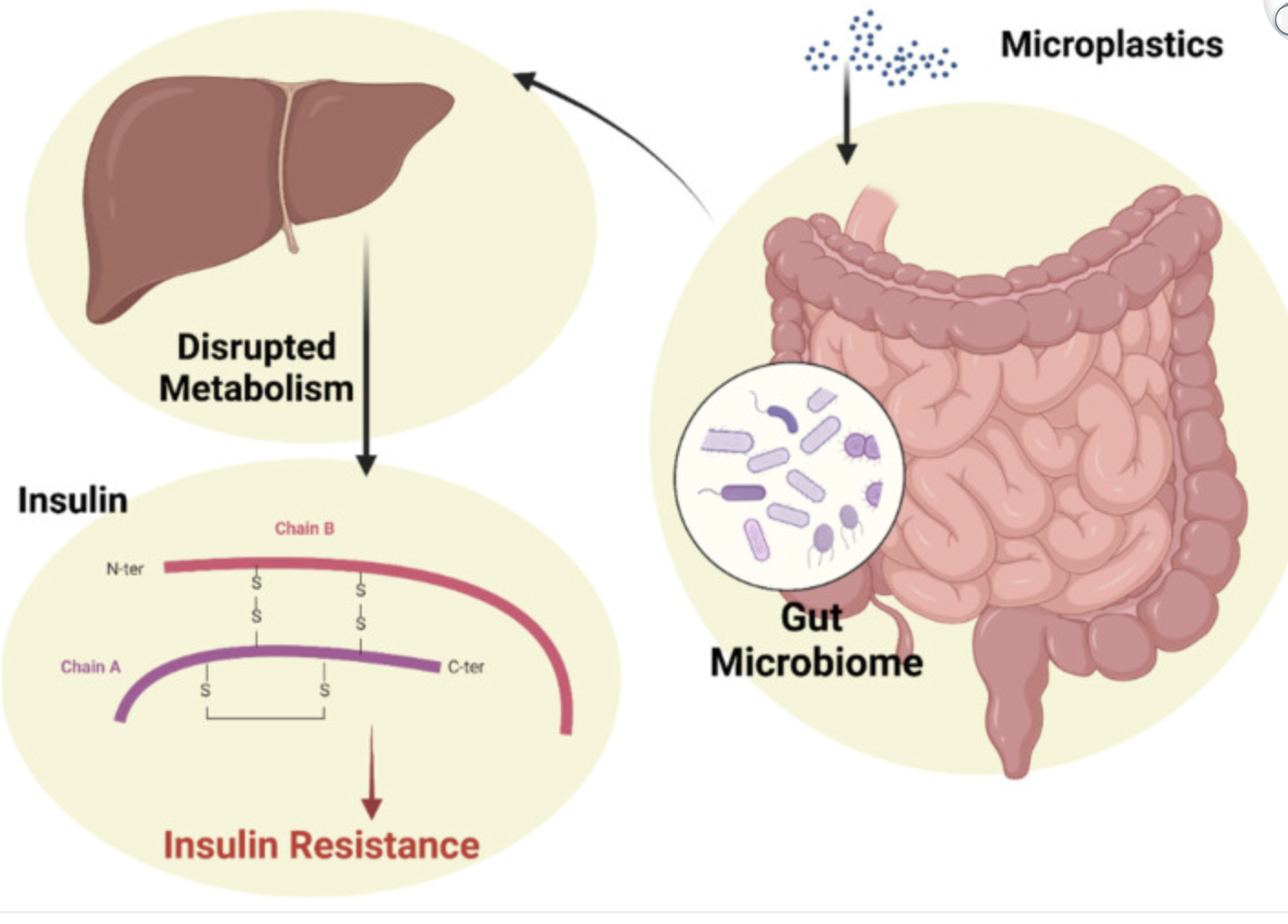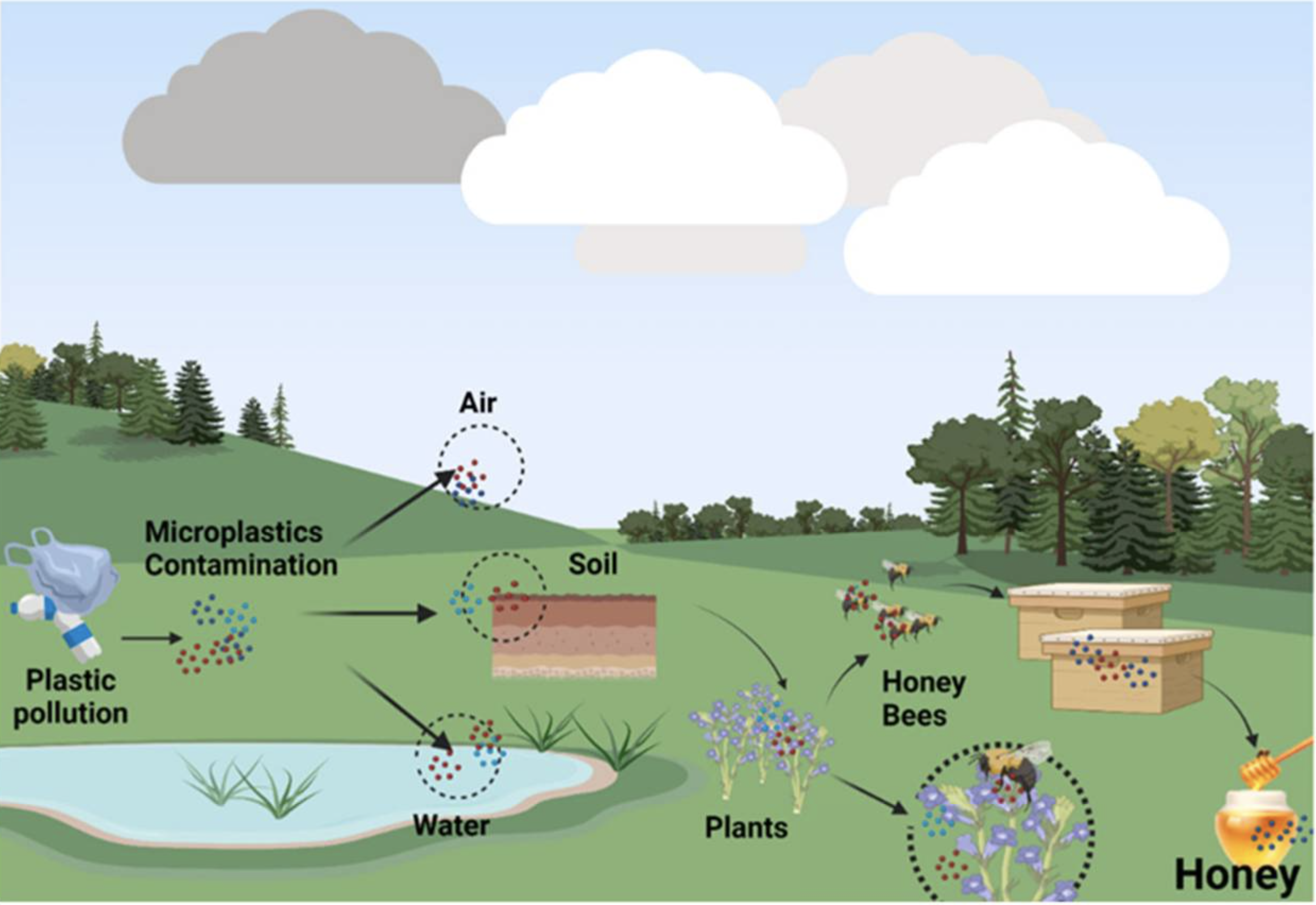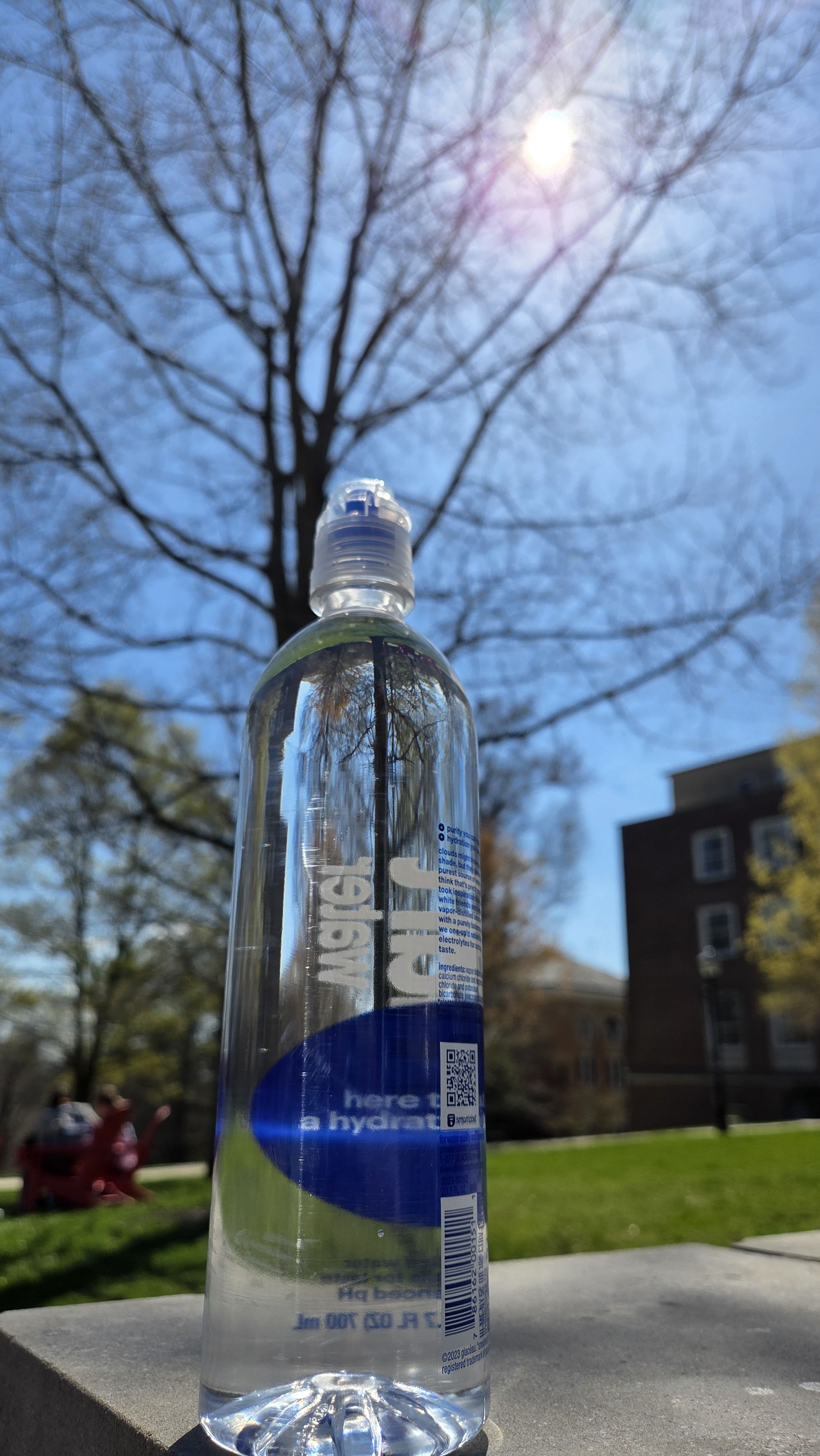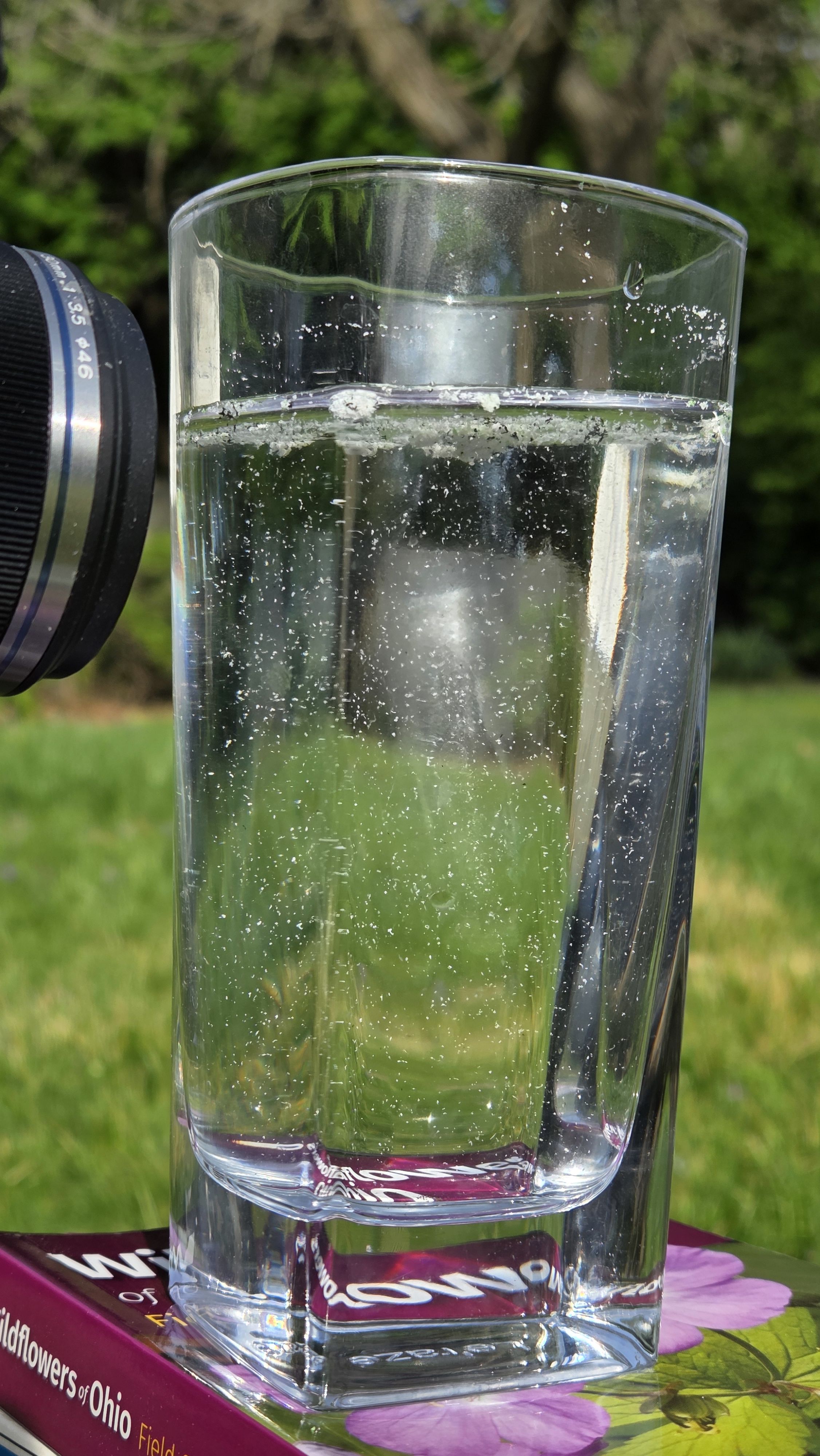Microplastics are everywhere
From the brain to remote regions of the earth, scientists are just beginning to study the effect of our plastic addiction

Joe Hunter and his wife have been paying attention to the problem of microplastics for over a year now. His wife is pregnant, and they know that microplastics can disrupt hormones as well as create other health problems.
“Mainly,” Joe says, “I know it comes down to heat. If heat touches plastic it starts to either leach off the chemicals or starts to shed plastic itself.”
When they go out for coffee, Joe’s wife brings her own container, steel on the inside with a ceramic top. It’s been a little more expensive in the short term, but a good investment.
Microplastics are tiny bits of plastic that were once part of larger plastics.
Microplastics are everywhere. They have been measured on Mount Everest — the tallest mountain on earth — and in the Marianas Trench — the deepest trench in the ocean. They have infiltrated the natural world, according to a comprehensive report published by the National Institute of Health.
Microplastics are tiny bits of plastic that have broken down from larger pieces of plastic. Photo by Doug Swift.
Microplastics are tiny bits of plastic that have broken down from larger pieces of plastic. Photo by Doug Swift.
The report, Microplastics: A Real Global Threat for Environment and Food Safety, describes how microplastics can be found in sea life, on bees and in the air. The damage microplastics can do to the environment and to human health is a burgeoning field of study.
Microplastics in aquatic environment, from NIH report. Created by BioRender.
Microplastics in aquatic environment, from NIH report. Created by BioRender.
WHAT CAN MICROPLASTICS DO TO ME?
Once microplastics enter the human body, according to the NIH report, “the additives and monomers in their composition can interfere with important biological processes in the human body.”
Microplastic is about the size of a sesame seed. But these microplastics can break down into nanoplastics, which cannot be seen by the human eye. The NIH warns that the health effects are not yet proven, but microplastics are suspected of causing neurological illness, diabetes and cancer.
University of New Mexico researchers have found especially high amounts of microplastics in the brains of people who had been diagnosed with dementia. The study, led by Matthew Campen, PhD., used tissues as old as 2016, and as new as 2024.
Image showing insulin resistance and microplastics, from NIH report. Microplastics are also suspected in neurological disease and cancers. Image created with BioRender.
Image showing insulin resistance and microplastics, from NIH report. Microplastics are also suspected in neurological disease and cancers. Image created with BioRender.
The study concluded that “the plastic accumulation appears to be growing over time, having increased by 50% over just the past eight years,” according to a story in the University of New Mexico Health Sciences News. It concludes that the amount of microplastics accumulating in the brain will continue to increase at the same rate as plastic production increases. Plastic production is expected to double by 2050.
WHERE ARE THE MICROPLASTICS COMING FROM?
Campen looked at food supply as a source for microplastics. In the UNM story, he theorizes that plastic-contaminated water is used on crops, and these crops are fed to livestock. The research team found high concentrations of microplastics in meat sold in grocery stores.
Microplastics in the terrestrial environment and the influence on apicultural products from the NIH report. Created with BioRender.com.
Microplastics in the terrestrial environment and the influence on apicultural products from the NIH report. Created with BioRender.com.
Another source is our bottled water. A study supported by the NIH “found that, on average, a liter of bottled water included about 240,000 tiny pieces of plastic. About 90% of these plastic fragments were nanoplastics. This total was 10 to 100 times more plastic particles than seen in earlier studies, which mostly focused on larger microplastics.”
Bottled water contains microplastics, according to NIH studies. Photo by Doug Swift.
Bottled water contains microplastics, according to NIH studies. Photo by Doug Swift.
Microplastics can also be present in tap water, according to another study published by the NIH. But the quantity is likely to be much lower than the amount in bottled water.
The study also revealed that “microplastic abundance increased as the particle size decreased both in tap water and bottled water.”
Microplastics can also be found in synthetic clothing, bedding and the air we breathe.
WHAT CAN WE DO?
Joe Hunter thinks a lot about this issue in regards to his family. He also thinks about it in regards to his work environment. He’s the manager of Station, a coffeehouse and bakery in Granville, Ohio.
[Editor's note: Station is a sponsor of The Reporting Project.]
He orders biodegradable containers whenever possible. He says they cost a little more, “but we’ve just eaten the cost.” He says many of the customers who come to Station are “conscious people who care a lot about both the environment and health on this matter. And so we get people coming in the line and saying, ‘Hey, I'll use fewer bags,’ or ‘Don't hand me a plastic spoon.’” They also get customers who, like his wife, bring their own containers for coffee.
Station coffee house in Granville, Ohio. Management is aware of issues with plastic, and provide alternatives wherever possible.
Station coffee house in Granville, Ohio. Management is aware of issues with plastic, and provide alternatives wherever possible.
Hunter also supervises conscious practices at Station. “We're very conscious to never put anything hot into a plastic cup. Instead, if you make your hot espresso that's coming out at about 200 degrees, you would want something in that cup first, whether it's the ice and the milk and the syrups already mixed together, and you throw that on top.”
There are many lists describing what you can do to reduce the microplastics in your life and in your brain, many of them quite detailed, like this one by Wirecutter, of the New York Times.
We’ve read scores of such lists. We’ve noticed a few general principles that may help you, both home and away:
- Plastic + heat = microplastics. That’s why, for example, it’s on every list to avoid bottled water. Those bottles heat up and get exposed to sunlight. They brew microplastics and shed chemicals.
- Microplastics concentrate higher up the food chain. Campen’s study confirmed this principle when they found high levels in grain-fed beef.
- Microplastics float in the air. Keep your home environment clean, and be wary if you live near industry stacks.
- Avoid buying plastic. Bottom line: all plastic will eventually become microplastics.
What does the future look like?
Wired magazine reports on a startup clinic in London which says it can cleanse your body of microplastics and related toxic chemicals--for over $10,000. Such procedures are untested, but this field will be watched by health journalists moving forward.
A California woman announced a class action lawsuit against the maker of Ziploc plastic bags this year. The suit, reported in USA Today, says the products contain undisclosed microplastics. As mentioned above, it's well known that microplastics are released when they contact heat. Ziploc bags are often used in microwaves. It's possible, as more is discovered about microplastics in the body and the health risks they pose, that more lawsuits will follow.
Finally, the US National Science Foundation announced in 2023 that genetically modified bacteria could break down plastic in salt water. The study was just the beginning, but some say it is a promising area of study in the fight against plastic waste.
Editor's note: The cover image was made by stirring microplastics into a glass of water, and filming with a macro lens. What naturally occurs in bottled water is nanoplastic, not visible to the human eye.

